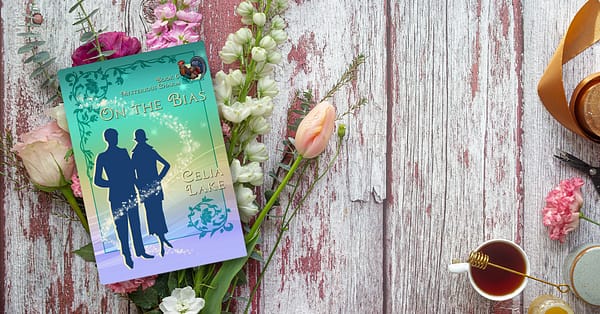On The Bias came to pass from a couple of distinct ideas. I’d been deeply curious about Thomas Benton, valet to Lord Geoffrey Carillon, since my first books. But I also wanted to spend some time dwelling on the glorious fashions of the period. And then there are my three dangerous birds.

Thomas Benton
Of course, there’s a syllogism here: as Geoffrey Carillon is to Lord Peter Wimsey, so is Benton to Bunter. Only, of course, Benton and Carillon are very much their own people, whatever the starting inspiration.
Thomas Benton is highly competent, but in a fairly specific way. As I mentioned back in a discussion of neurodiverse characters in my books, Benton is definitely somewhere on the autistic spectrum. For him, the structured expectations of service in a great country house were often reassuring, rather than restrictive. The great houses ran like clockwork, with clear delineations about who was doing which task (and in a well-run house, with clear instruction in what those tasks involved.) The social interactions were the same way: there were clearly identified things you might do on your afternoon off, who you spent your time with, and so on.
(Obviously, there are a lot of people for whom these things were limiting, too restrictive or even abusive. But it’s also clear if you read historical sources that there were plenty of people for whom that structure was comfortable in varying ways, or at least a good fit at a particular point in their lives.)
Benton came into the trenches in the Great War, and was assigned as Carillon’s soldier-servant. The trenches were absolute chaos, of course, but Benton devoted himself to learning the things that made them a little more bearable, including judicious applications of magic to dry socks, warm water, and take the damp out of bedding.
It also brought him into close contact with Carillon, someone who he could look to for steady direction. When Carillon left the trenches for Intelligence work, he brought Benton with him – and into a long string of adventures and expeditions. When the world changed again, and they returned to Albion, Benton settled into managing his lordship’s household. (It would have been far more common to have a butler as well as a housekeeper, but until Carillon marries, the primary residence at Ytene does relatively little entertaining, and is quite small even by 1920s standards.)
Anyway, On The Bias is the tale of how Benton’s life changes again, and what that means for him. (And for Carillon.)
Clothing
The 1920s are fascinating for clothing in a number of ways. Of course, styles change dramatically from the far more encompassing clothing of the Edwardian and many previous ages. Skin is bared, ankles and even knees in evidence. But it isn’t just the cut – it’s also about new and modern materials, about different colours available through the magic of new dyes, and so much else.
I spent a lot of time looking at references to period clothing and other aspects of fashion.
At this time, clothing was beginning to transition from clothing provided either by specialist creators (like Cassie) or by people in the home (a time-consuming process) to off the rack, commercially produced clothing. However, there’s still definitely a place for people like Cassie for bespoke and custom-designed clothing (such as is needed at the highest reaches of society.) And of course, magic adds a number of possible elements, in construction, materials, and design.
Two resources I came back to a lot (for ease of finding images and using them as references) are VintageDancer and Glamour Daze – the latter links to some fascinating guides to cosmetics, hair, and other aspects.
Three dangerous birds
Every so often, I write a book and a theme emerges that I hadn’t expected. In this one, it’s three dangerous birds.
We started with the rooster, because my editor had been chatting with a friend of theirs about a machine translation of a romance novel that, when translated back to English, translated a key phrase as “difficult rooster”
Which makes a person want to do something with that.
So when I realised Benton needed to find some people doing some illegal things, a cockfight it was! (Benton is rightfully dubious about that.) This led to swan-taking (treasonous, though Benton is not particularly worried about that part), and then to Theodora, Carillon’s much loved eagle-owl.
The coming prequel
This summer, I’ll be sharing (for everyone on my mailing list) a prequel novella of Carillon inheriting, which is alternating between Carillon and Benton as the point of view character. It takes place in the first half of 1922, and includes a bit more of Theodora, as well as a glimpse of the mystery of Temple Carillon’s death. Keep an eye out here, there, or on my Twitter or Facebook for more about that when it’s out.
(There’s more about that in Best Foot Forward, which takes place in 1935, and will be out in November 2022.)
If any of these things intrigue you, check out On The Bias.
